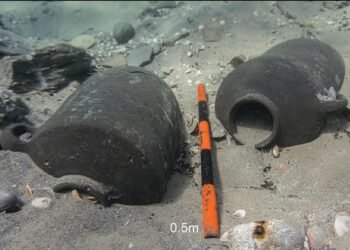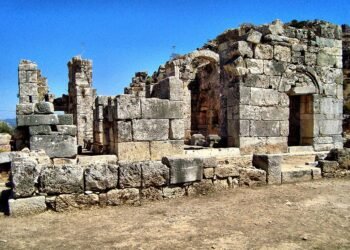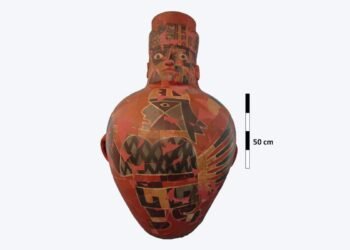During an archaeological excavation near Hadrian’s Wall in England, researchers have made an intriguing discovery: 2000-year-old engraved gems found in the drain of a Roman bathhouse.

This bathhouse, located in the Carlisle area of Stanwix, was used by soldiers from the nearby Roman fort of Uxelodunum, also known as Petriana, for recreational and bathing purposes.
The drain of the bathhouse yielded approximately 30 semi-precious stones that had fallen out of their ring settings, possibly due to the weakened glue caused by the steamy baths.
The gems, which were considered highly valuable at the time, were likely swept into the drains during the cleaning of the pools and saunas.

These engraved gems, known as intaglios, date back to the late second or early third century CE.
Among the recovered gems is an amethyst depicting Venus, possibly holding a flower or a mirror, as well as a red-brown jasper featuring a seated satyr next to a sacred column.
The significance of these gems is highlighted by the fact that they are not typically found in lower-status Roman sites.
Speaking to the Guardian, Frank Giecco from Wardell Armstrong said: “You don’t find such gems on low-status Roman sites. So, they’re not something that would have been worn by the poor. Some of the intaglios are minuscule, around 5mm ; 16mm is the largest intaglio. The craftsmanship to engrave such tiny things is incredible.”
In addition to the engraved gems, the excavation also uncovered other interesting artifacts, including over 40 women’s hairpins, 35 glass beads, a clay Venus figurine, animal bones, and tiles stamped with imperial markings.
Previous excavations at the bathhouse had revealed various rooms, a hypocaust system, terracotta water pipes, intact floors, painted tiles, and fragments of cooking pots.
The recent discovery of the engraved gems provides further insights into the recreational activities and luxurious lifestyles enjoyed by the Roman soldiers stationed in the area.





















